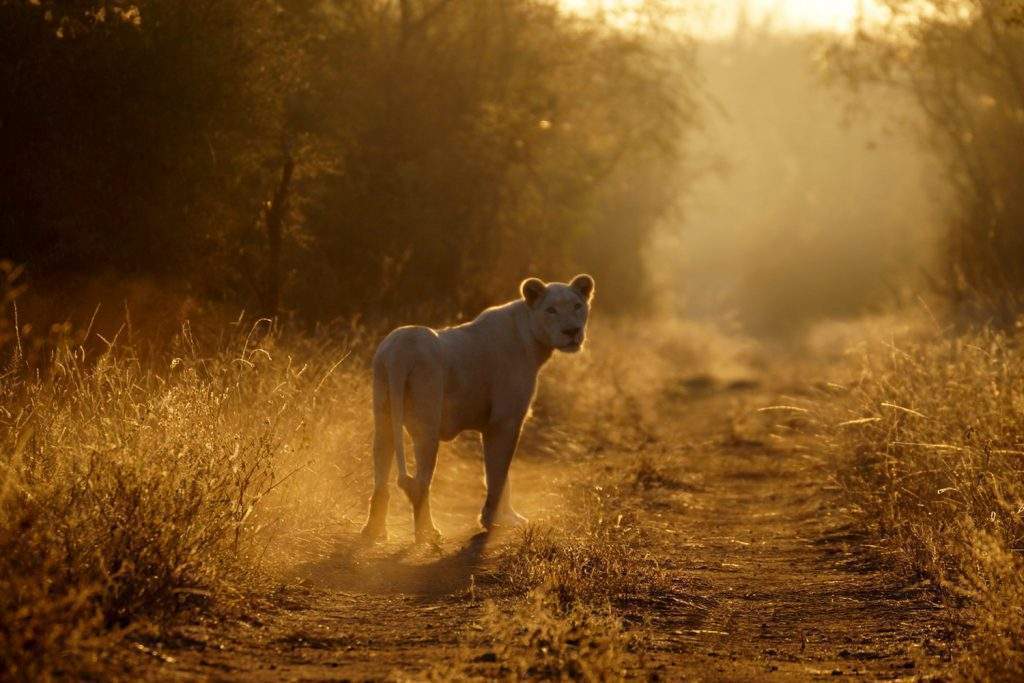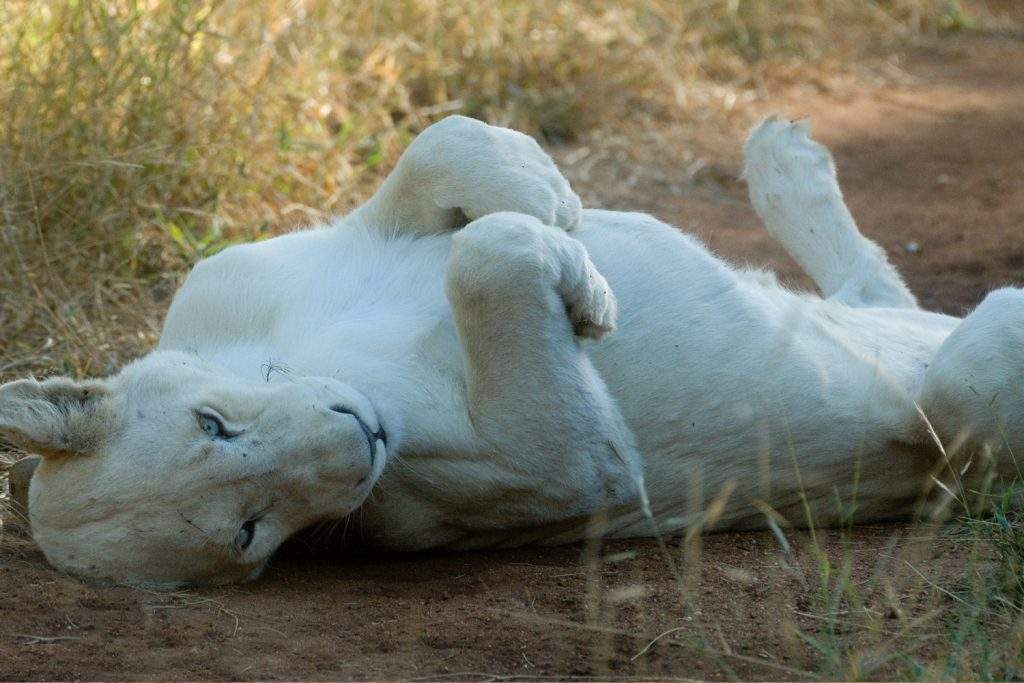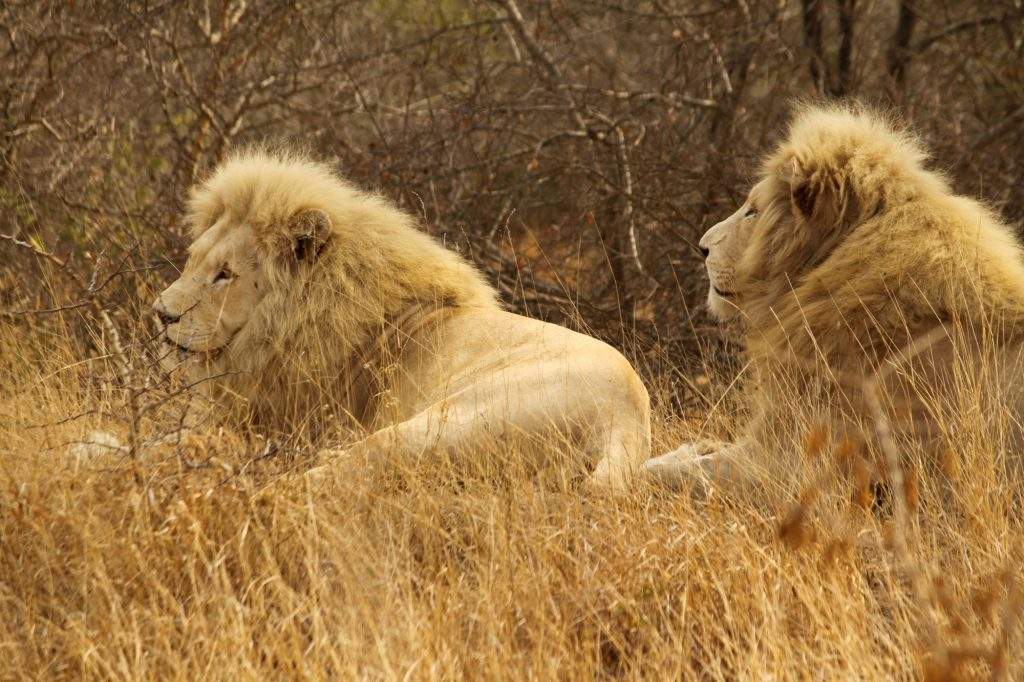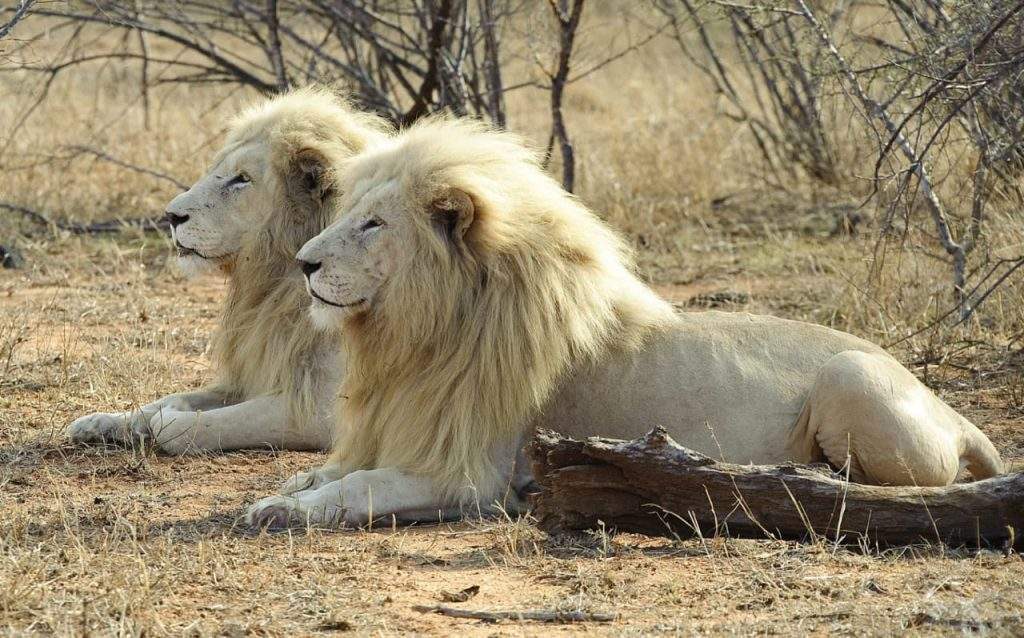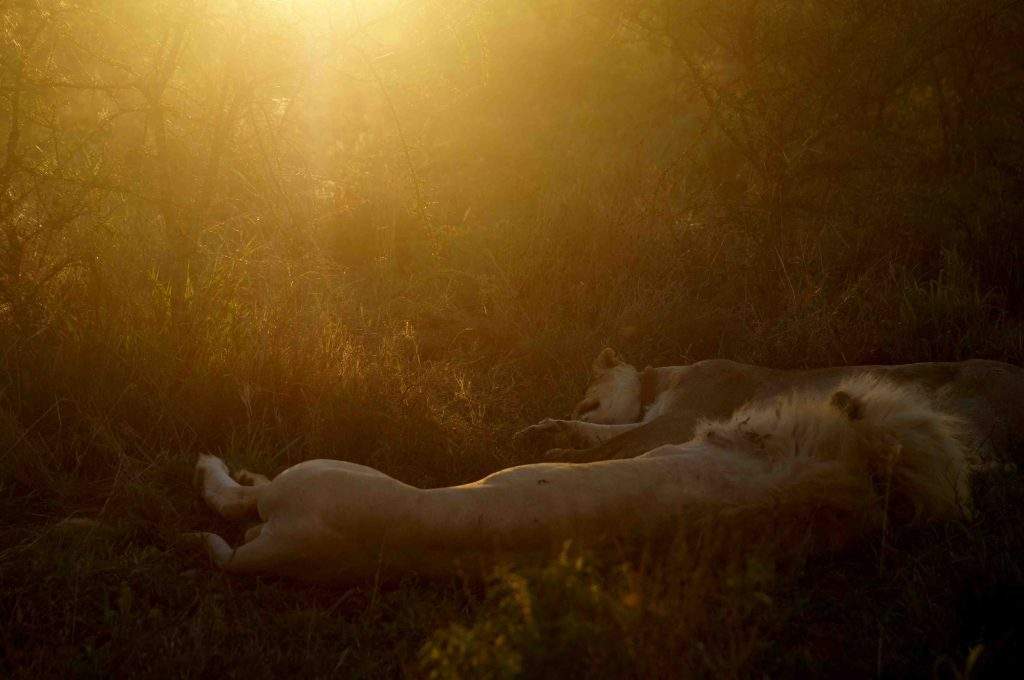21 “Most-asked” scientific questions about White Lions answered.
by Jason A. Turner, Senior Scientific Consultant to the Global White Lion Protection Trust.
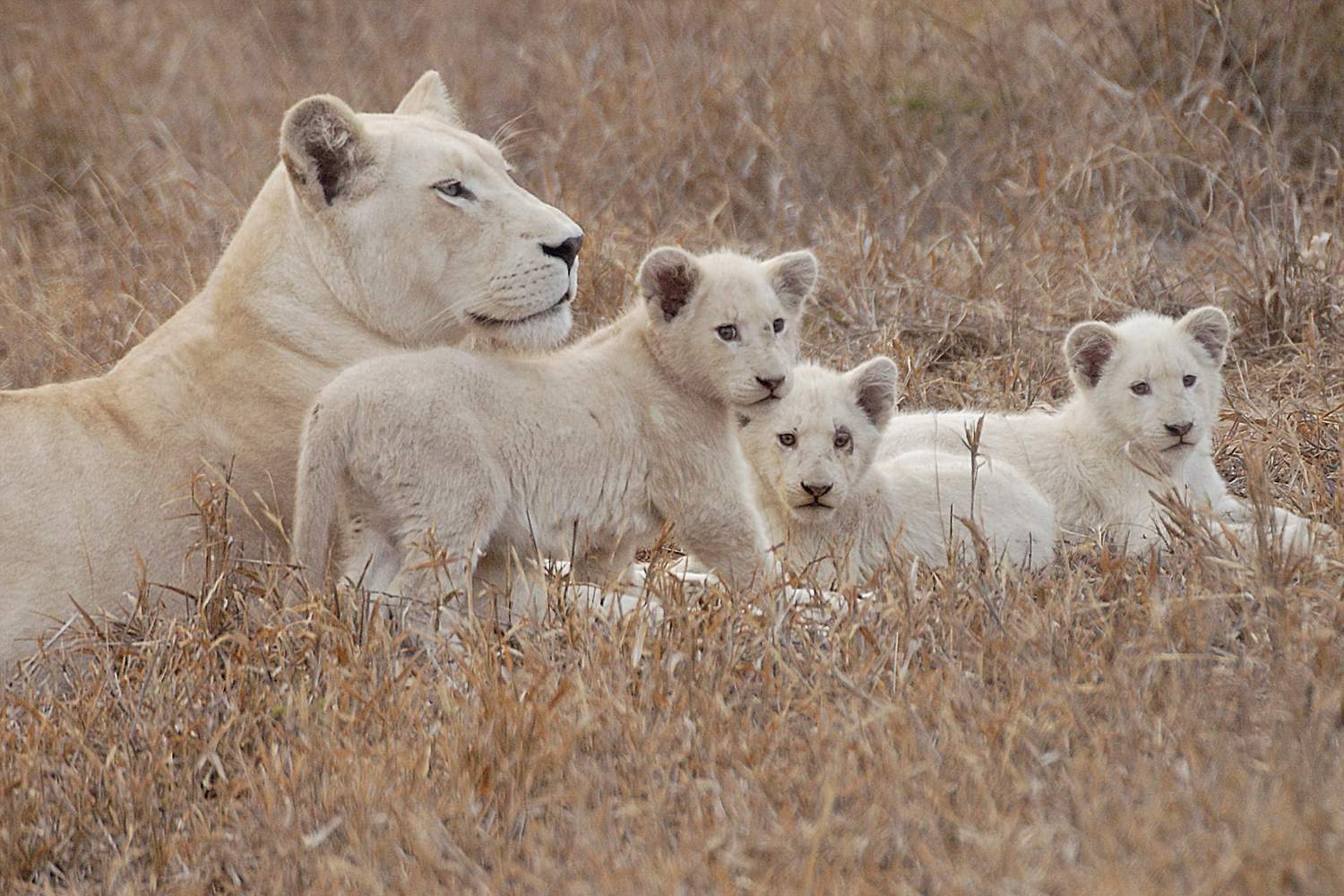
by Jason A. Turner, Senior Scientific Consultant to the Global White Lion Protection Trust.
Turner: No, they are not. White colouration in White Lions is similar to blue eyes in humans, which is also due to a recessive gene.
Turner: The White Lions occur naturally in South Africa, and have been sighted in the Greater Timbavati and southern Kruger Park region.
Turner: After they were ‘discovered’ by Europeans in the 1930s, White Lions were artificially removed from the wild to captive breeding and hunting operations. Along with these removals, lion culling in the Kruger National Park and trophy hunting of pride male lions in the Timbavati, depleted the gene pool.
Turner: ALL lions in the Timbavati region may be better protected, because the genetic code proves that they are a sub-species, not an accident of nature.
Turner: No, they are not classified endangered simply because they are not yet appropriately classified. Presently, the White Lions are listed as Panthera leo, which is classified as ‘Vulnerable’, meaning they may become threatened with extinction in the future, unless trade is closely controlled’.
Turner: White Lions are classified as Panthera leo, which means they are not recognised by current scientific labelling as being ‘different’, and are therefore not protected by law. This means they can be hunted or traded to extinction – although there are less than 20 White Lions in the wild in their natural habitat. The White Lion gene needs to be researched, understood and protected, as a matter of urgency. In terms of current scientific classifications and methodology, this requires an up-listing of the conservation status of lions in South Africa from CITES Appendix II to Appendix I.
Turner: Some geneticists / scientists oppose sub-classification, believing that everything should be ‘lumped’ together as a single species. Others support sub-classification, arguing that “to protect the whole you need to protect all the parts”. Identification of the special White Lion gene is evidence that they can be classified as a sub-species.
Turner: The primary aim of the Global White Lion Protection Trust is to re-establish White Lions in the area in which they once occurred naturally. This is undertaken as a carefully phased scientific programme, in strict accordance with current conservation principles.
Turner: Yes, the Greater Timbavati region in South Africa is characterised by white sandy riverbeds and in the winter, the long grass in this area is scorched pale. In this habitat, which is their place of origin, they are very well camouflaged.
Turner: Our research objectives are in alignment with those of the IUCN:
i) we aim to restore the natural biodiversity of the area;
ii) we aim to enhance the long-term survival of a species;
iii) we aim to provide long-term economic benefits to the local community;
iv) we aim to re-establish a capstone species in both the ecological and cultural sense; and
v) we aim to promote conservation awareness.
Turner: Like the White Lion, the so-called ‘Spirit Bear’ (aka the Kermode Bear, Ursus American Kermodei)is a unique genetic variant of the Black Bear and occurs in only one place in the world: the temperate rainforests of British-Columbia. Also, like the White Lion, the white coat of the Spirit Bear is believed to be the result of a double recessive allele (gene). The Spirit Bear has significant cultural importance to the First Nations’ Kitasoo People, and has been protected by law with 220 000ha set aside for their protection. We are using this precedent in our campaign to reclassify White Lions.
Turner: By 2013, three prides of White Lions were hunting as effectively as their wild tawny cousins in their natural habitat, on land owned by the Global White Lions Protection Trust. Two of the White Lion groups were then successfully integrated with wild tawny lions, since White Lions were naturally born to tawny prides.
Turner: The breeding of lions in captivity opposes everything our project stands for. The White Lions in our Reintroduction Programme have been reintroduced to free-roaming conditions in a wildlife area that continues to expand over the years, as the Trust purchases more and more properties in this critical biodiversity area. The Reintroduction Programme is in line with current strategies for lion conservation that follow the “meta-population” management approach, which is already in use in other parts of southern Africa. In order to completely introduce White Lions back into the wild, and to ensure genetic diversity, the White Lion Trust aims to establish and manage a number of separate sub-populations, before reintegrating the White Lions with resident tawny prides within the Greater Timbavati / Kruger Park Region, when internal fences are eventually dropped to form the Joint Protection Zone (JPZ) bordering onto the Kruger National Park.
Turner: Our scientific monitoring team records the behavioural and hunting patterns of the White Lions every day during their peak activity periods. The lions are radio-collared so we can always track them and note their patterns of behaviour. The lions are never approached on foot. We follow a strict scientific protocol, and any cubs that have been born according to natural pride dynamics are raised by their mother, and are never approached or touched.
Turner: With the risks involved in hunting in the wild, lion mortality is high – up to 80% of lion cubs do not survive to become adults. Risks include injury whilst hunting large prey such as buffalo or giraffe, poacher’s snares and even disease (such as Bovine Tuberculosis). Despite a few casualties, the Global White Lion Protection Trust has successfully released three White Lion prides, and all of the cubs of our founder White Lions have survived to adulthood.
Turner: In May 2006, after more than a decade had passed without sightings of White Lions, two White Lion cubs were born – amidst tawny cubs – in the Umbabat Private Nature Reserve (neighbouring Timbavati). In October 2006, another two white cubs were born at Tabby’s Crossing in the Timbavati Reserve. Unfortunately, none of the white cubs – or their tawny siblings – survived. At the best of times, the survival rate of lion cubs to adulthood is only 20%. However, these cubs faced additional challenges, since their likely father was trophy hunted, and the prides in the region faced infanticide. In 2014, the first white cubs were once again born in the Kruger National Park (Nwanetsi-Singita Lebombo Concession) – a region in which there is no lion trophy hunting, so there is much hope for the long-term survival of White Lions. Despite the continued commercial trophy hunting of lions in the Greater Timbavati region, there have now been several occurrences of White Lions over an extensive area, proving the conservation value of this rare phenotype to the biodiversity of this wilderness region.
Turner: They were first spotted in 1938 and photographically documented in the 1970s, although African records indicate they were resident in this region for a much longer period. Due to artificial removals from this region, there was a period of virtual extinction. However, between 2006 and 2015 there have been 15 births of White Lions in the Timbavati-Umbabat-Klaserie Private Nature Reserves, and 2 births of white cubs in central Kruger National Park. There are currently less than 13 White Lions living in the wild. Interestingly, this coincided with our introduction of Marah and her cubs into free-roaming bushveld conditions in the heart of their endemic territories.
Turner: Yes, there were two attempts made by the Timbavati Private Nature Reserve themselves: the first was in the late 1980s, and the second took place in 1993. Sadly, reintroduction techniques were not as sophisticated as they are today, and those attempts failed.
Turner: Yes, they will. The Global White Lion Protection Trust has already integrated the reintroduced White Lions with wild tawny lions in our extended wildlife area. Our ultimate goal is to once again integrate the wild-born White Lion offspring into the Greater Kruger Park lion population.
Turner: This term ‘purist’ is inaccurate. In reality, there are very few ecosystems today that are not, in some way, managed. This applies to the Associated Private Nature Reserves (APNR) bordering the Kruger National Park, which have intervened in the natural system in many ways, including through firebreaks, road and other infrastructure as well as the commercial trophy hunting of lions and other members of the so-called Big Five over several decades. Even the Kruger National Park itself, in spite of being greater than 20 000km2, is not an entirely self-contained system in nature. It is managed: ie. vegetation is burnt on a rotational basis; species are translocated to and from the national park, tarred roads and tourist camps have been constructed, and it is fenced without full consideration for the Source waters. In this way, and others, Nature’s balance has been disturbed through human intervention, and our role is to responsibly restore it.
Turner: The more knowledge we gain, the better chance of changing legislation and having lions protected. White lions need to be reclassified on the Schedule of Threatened & Protected Animals of National Importance, and we need to research just how often this white gene occurs in the Greater Timbavati / Kruger Park Region of UNESCO’s Kruger-to-Canyons Biosphere. We will use this information to better protect all lions in this region.
